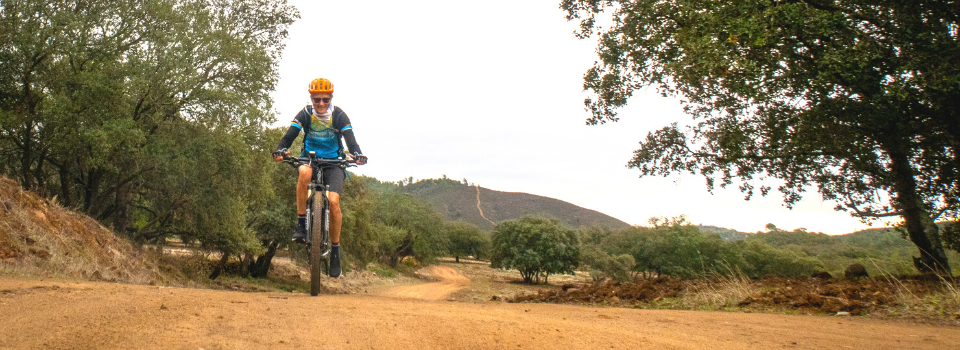In the Explorer Primer Part 1 we reviewed the type of roads you can expect to find on an ExperiencePlus! Explorer tour as well as the bicycles we provide.
As we discussed in Part 1, being comfortable riding “off road” – be it a dirt road or two-track lane – is key to enjoying all that an ExperiencePlus! Explorer Tour has to offer. Never ridden dirt and don’t know where to start? Not to worry. All you need is a bicycle, some dirt, and a sense of adventure.
If you don’t own a ‘gravel bike’ that you purchased specific to the activity, have no fear. You or someone you know likely has just what you need for your first foray into gravel riding. I say ‘gravel’ bike because while you can certainly purchase a bike that is designed and marketed specifically for gravel riding, what makes a bike suited for gravel has less to do with frame weight and drop handles bars than it has to do with tire size and width, gearing, and your personal objectives.
Three common denominators (there are more – but we’ll focus on these) among all gravel-worthy bikes are sturdy 700cc wheels, wider tires – one to two inches – with some tread (doesn’t have to be very knobby, but not slick), and gearing options that are between what you find on a road vs. mountain bike. The next tier of importance and similarity is frame geometry (more relaxed for touring). I parse out frame because I think you could take a road frame and convert it into a gravel-worthy bike (but that’s a project for someone with time and money, or time and skills, or time, skills and money!). A few years ago, this would have been called a “hybrid” bike in some circles.
As noted earlier, on ExperiencePlus! Explorer tours we outfit our titanium hybrid bicycles with slightly wider tires (700 x 35 or 45 Schwalbe Marathon Racer) than our road bicycles (700 x 32), due to that frame’s narrower fork clearance. Gearing on both styles needs no modification. Our hybrid e-bikes are already perfectly equipped with wider tires that nicely handle mixed road conditions and terrain. We expect to have new e-road bikes (with gravel bike geometry) available by 2023. But, since you’re not on tour (yet!) let’s get back to the topic at hand.
Here are three low-to-no-cost ways to experience gravel riding for the first time:
- Rent or demo a gravel bike from your local shop.
Given the surge in gravel riding’s popularity, it’s likely your local store has a few gravel bikes in its rental fleet, or at least a few bikes that have a similar build. If you can, try different makes and models to compare fit, componentry, and overall performance. Ask the folks in the shop if they ride gravel and if so, what bike they have – and why. Chances are high they got a great deal on the bike, but chances are also good they built up their own and would love to tell you all about it. - Borrow a gravel or mountain bike (see below) from a friend.
Some of us own more bikes than we have room to store, so I bet that you, or someone you know, has a friend who collects bicycles like my sofa does dog hair and would be thrilled to help you get out on some dirt and maybe even join you. Keep in mind their bike is set up for them, so if you need to make any adjustments, clearly mark their current settings with some tape or other indicator first so you can return their bike to them as you received it. Again, talk with your (new best) friend about the pros and cons of what they purchased and take notes. - Use a mountain bike.
This might seem like a no-brainer, but it’s worth mentioning that many of us might have an old-school, hard tail or fully rigid mountain bike in the garage. It doesn’t matter if the mountain bike has 26”, 27.5” or 29” wheels and tires that are more than 2” wide. The point is that the bike is designed to ride off-road and if you’ve never done so, this will give you a chance to comfortably ride hard dirt, soft gravel, and washboard track with confidence. If you’re on a full-suspension bike, lock out the travel as much as possible. You can also increase your tire pressure to provide a more ‘firm’ ride.
Regardless of where or how you come by a gravel-style bicycle to test ride some dirt, you’ll likely want to don your bike shorts and gloves, bring plenty of water, and of course, wear a helmet. If you live in a place where riding year-round is not possible, it’s still worth heading to your local shop to talk bikes, reading bike reviews online, and planning when you can get out on your first adventure.
In our third and final installment we’ll focus on where to find and ride gravel/dirt no matter where you live, and how to train for your first ExperiencePlus! Explorer Tour. Until then, keep the rubber side down!


